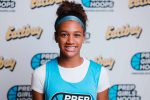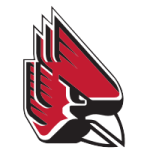<!-- wp:paragraph -->
<p>As quickly as the high school season wrapped up, the grassroots season is well underway. As 2025 commitments slow down, the Class of 2026 begins to figure things out with their recruiting. With that said, March brings one of the quarterly rankings' updates to the site, and there have been a number of items to consider since December, including the state tournament, a couple of showcases, and the Shamrock Classic. Last week, we rolled out the final Class of 2025 update, so I wanted to address that below, as well as focus on updates for the classes of 2026, 2027, and 2028 coming over the next couple of weeks. Not only will we update rankings in each of those four classes, but there will also be written coverage of each graduating class to update you on different prospects. Below, I have outlined what is happening with all four of those graduating classes (2025-2028) this quarter. Following that is an in-depth look at how I break down player lists and build them back up to form rankings for each season. Nearly every question posed by subscribers immediately following the release of rankings can be answered there, so please be sure to check out that section of this article.</p>
<!-- /wp:paragraph -->
<!-- wp:paragraph -->
<p><font color="#FFFFFF">.</font></p>
<!-- /wp:paragraph -->
<!-- wp:paragraph -->
<p><span><span style="font-weight: bold;font-size: 14pt">CLASS OF 2025<br></span></span>The final Class of 2025 list expanded from 275 to 300 total prospects last week, including a Top 150 plus a watch list of 150 additional prospects. As usual, there was some typical maintenance, and players were reranked. Additionally, as new players were added to the watch list, a few players moved from the existing watch list into the Top 150, and vice versa, along with a few changes in terms of player movement within the Top 150. Now that the 2025 update is "live", a few girls may be higher or lower on the list than they have been over these last three months. In situations where players fell a few spots, this typically doesn't have as much to do with their own play as it does with others who were lower than them showing significantly improved value as a prospect and moving up the list. Additionally, of the handful of girls being added for the first time, they might not all be placed on the watch list, and a couple of them could find their way into the Top 150 players already ranked, causing a few other prospects to trickle down a bit.</p>
<!-- /wp:paragraph -->
<!-- wp:paragraph -->
<p><span><span style="font-weight: bold;font-size: 14pt">CLASS OF 2026<br></span></span>The Class of 2026 list currently holds 200 total prospects, as it expanded by 15 during the Winter update. The Class of 2026 currently includes a Top 100, along with a watch list of 100 additional prospects arranged alphabetically, for that total of 200 prospects. Over the next week, the list will not expand and will remain at a total of 200 players listed. As usual, there will be some typical maintenance, and players will be reranked. Additionally, as new players are added to the watch list, a few players could move from the existing watch list into the Top 100, and vice versa, along with a few changes in terms of player movement within the Top 100. Once the 2026 update goes "live", a few girls may be higher or lower on the list than they have been over these last three months. In situations where players fall a few spots, this typically doesn't have as much to do with their own play as it does with others who were lower than them showing significantly improved value as a prospect and moving up the list. Additionally, of the handful of girls being added for the first time, they might not all be placed on the watch list, and a couple of them could find their way into the Top 100 players already ranked, causing a few other prospects to trickle down a bit.</p>
<!-- /wp:paragraph -->
<!-- wp:paragraph -->
<p><span><span style="font-weight: bold;font-size: 14pt">CLASS OF 2027<br></span></span>The Class of 2027 list currently holds 150 total prospects, as it expanded by 25 during the Winter update. The Class of 2027 currently includes a Top 75, along with a watch list of 75 additional prospects arranged alphabetically, for that total of 150 prospects. Within the next couple of weeks, we will be updating the list, but it will not be expanding, and it will remain at a grand total of 150 players listed. As usual, there will be some typical maintenance, and players will be reranked. Additionally, as new players are added to the watch list, a few players could move from the existing watch list into the Top 75, and vice versa, along with a few changes in terms of player movement within the Top 75. Once the 2027 update goes "live", a few girls may be higher or lower on the list than they have been over these last three months. In situations where players fall a few spots, this typically doesn't have as much to do with their own play as it does with others who were lower than them showing significantly improved value as a prospect and moving up the list. Additionally, of the handful of girls being added for the first time, they might not all be placed on the watch list, and a couple of them could find their way into the Top 75 players already ranked, causing a few other prospects to trickle down a bit.</p>
<!-- /wp:paragraph -->
<!-- wp:paragraph -->
<p><span><span style="font-weight: bold;font-size: 14pt">CLASS OF 2028<br></span></span>The Class of 2028 currently has just a watch list of 85 total prospects, and it was introduced for the first time during the September update. Within the next couple of weeks, we will be updating the list by adding 15 new 2028 prospects to the overall list, for a grand total of 100 players listed. Additionally, we will create our first traditional "rankings" for the class, separating those 100 prospects into a Top 20 or 25 and a watch list including the other 75 to 80 prospects.</p>
<!-- /wp:paragraph -->
<!-- wp:paragraph -->
<p><font color="#FFFFFF">.</font></p>
<!-- /wp:paragraph -->
<!-- wp:paragraph {"align":"center"} -->
<p class="has-text-align-center"><span style="font-size: 18pt"><strong>A BEHIND THE SCENES LOOK AT RANKINGS "CONSTRUCTION"</strong></span></p>
<!-- /wp:paragraph -->
<!-- wp:paragraph -->
<p>Rankings throughout the Prep Girls Hoops Network are typically updated on a quarterly basis. For Indiana, that means during the months of March, June, September, and December. We've found that those months give us the best chance to update lists at the beginning and during the mid-points of both the high school and grassroots seasons, allowing prospects time to grow and improve. With that said, each time we release new rankings there is about a two to three-week window where we receive numerous comments and questions. Most of the time it's trying to figure out how a prospect is ranked "too low" in someone's eyes, how we "missed" on someone, or why another prospect is ranked higher. So, I wanted to take the time to address how I personally organize and prepare rankings, because I think there is a lot more thought and preparation that goes into this than might be assumed.</p>
<!-- /wp:paragraph -->
<!-- wp:paragraph -->
<p>To start with, there are many factors that go into the decisions I make on moving players around throughout a rankings list. It isn't as simple as sliding kids up or down because they did or didn't play well in the span between the old list and the new list. I actually take every prospect I consider and assign them a rating first...<em>a rating and a ranking are very different</em>. A <strong>RATING</strong> is a non-numerical value associated with a prospect's projected level of college play. I assign this to prospects based on their "recruitability". <span style="text-decoration: underline">Several prospects in a single class might share the exact same rating</span>, and I will detail that later in this section. A <strong>RANKING</strong> is the numerical value of simply organizing the final list, placing someone #1, someone #2, someone #3, etc.</p>
<!-- /wp:paragraph -->
<!-- wp:paragraph -->
<p>When assigning a rating, a lot of it is the "eye test", and me simply using my better judgement and experience in approximating what collegiate level a prospect fits into. I now attend more than 30 college games at various levels each season, so I see firsthand how fast and physical the game is at different levels, and what those players are capable of athletically and skillfully. I also like to compare current prospects to players from the past and look at how someone similar who maybe graduated in 2018 fit in at their college destination. Additionally, I spend a lot of time speaking with college coaches and asking them what they are looking for, what they like or dislike about specific kids, and I'll even ask them where I'm incorrect in my thinking on a specific prospect and why. I can say the rapport I've built with several Midwestern colleges has allowed me a great opportunity to receive their genuine opinions and candor.</p>
<!-- /wp:paragraph -->
<!-- wp:paragraph -->
<p>Now, I think there are several misconceptions when it comes to organizing rankings as well. For example, statistics are not meaningless, but they are just a small part of what is to be considered for projecting a prospect to the next level. If a prospect averages, let's say, 20+ points per game on a 200-level schedule during the Winter, it doesn't hold as much water as a prospect who averages 15 points per game on a Top-50 schedule. Productivity is definitely important, but who are you being productive against? I also think it's interesting when people tell me "well, we shut her down" or "when we played them, our player scored more". Once again, perception is reality, and those two statements might be true, but in what context? Not in every case, but in most cases I come to find out that the player who was "shut down" still contributed in other ways, and she did so with the entire opposing team chasing her around all game long. In many cases, coaching and game-planning go a lot farther during the high school season with days to prepare for an opponent than they do during the Summer when there's usually a game every three to four hours, with straight up 1-on-1 man defense or a passive zone, and you can really see what a player is capable of offensively.</p>
<!-- /wp:paragraph -->
<!-- wp:paragraph -->
<p>I also think in today's day and age, we get so caught up in players emotionally because they are a "great kid", or they work extremely hard at their game. Those are both important factors in the makeup of a basketball player, but they are also just pieces of what a college coach is looking for in a prospect to help their program be successful. You still have to be able to handle, shoot, pass, and defend, and you still have to be able to run and jump to some degree. Let me play devil's advocate for a moment...if I came to you and said I had a kid who is the greatest kid on the planet, she works charity events, volunteers at the local children's hospital, and she carries a 4.3 GPA, plus when she's in the gym she practices and plays harder than anyone else on the team, dives on the floor for loose balls, takes charges, and is a great teammate...is that enough for you to recruit her? What if I followed that up by saying she is a 4-foot-8 Senior power forward? Does that change your thinking when it comes to a team being successful at the collegiate level? I exaggerate for effect, but hopefully you understand my point. Circling back, I just think there are several people today who get so emotionally attached to one specific player or a small group of players because they are hard-working, great kids, that we lose sight and completely forget there are other really good kids out there who are better basketball players, who might be more skillful and/or more talented athletically.</p>
<!-- /wp:paragraph -->
<!-- wp:paragraph -->
<p>One other item that bothers me is when someone accuses me of not "liking" a player simply based on the numerical value I attach to them when I post a ranking list. I find that very curious, because I've even written in several past articles that certain players were favorites of mine to watch, and quite a few of them were ranked outside of the Top 50, with even several of those being ranked in the 100s or 200s. Whatever numerical value I assign to a player has little to do with me "liking" them and <span style="text-decoration: underline">everything</span> to do with how I think colleges will recruit them.</p>
<!-- /wp:paragraph -->
<!-- wp:paragraph -->
<p><font color="#FFFFFF">.</font></p>
<!-- /wp:paragraph -->
<!-- wp:paragraph -->
<p><span style="font-size: 14pt"><strong>THE RATING SYSTEM</strong></span></p>
<!-- /wp:paragraph -->
<!-- wp:paragraph -->
<p>Below I wanted to share with you my personal rating system, and how I organize prospects based on what I determine is their "recruitability". Each time I watch a prospect, even if I watch them multiple times throughout a single weekend, I write down a projection for them. The following week, I go back through my notes and compare what I have written about each prospect over time, and I assign an updated rating to them based on what I think their "recruitability" is at the current moment. Below is a look at the projections I use and a brief explanation for how I look at each projection.</p>
<!-- /wp:paragraph -->
<!-- wp:paragraph -->
<p><strong>HM+ D1</strong> - these are prospects who I feel can play at any college in the country, and they are prospects who the elite programs like Notre Dame, South Carolina, and UConn would offer...these are National Top 10 type of kids</p>
<!-- /wp:paragraph -->
<!-- wp:paragraph -->
<p><strong>HM D1</strong> - these are prospects who will pick up several High-Major offers (<em>Big Ten, SEC, Big 12, etc.</em>), they fit at MOST High-Major schools, but they might not be a good fit for the most elite programs like a Notre Dame, South Carolina, or UConn</p>
<!-- /wp:paragraph -->
<!-- wp:paragraph -->
<p><strong>MM to HM D1</strong> - these prospects are either on the cusp of being High-Major D1, they are in my opinion talented enough but haven't earned those offers yet, or they may have offers/interest from the bottom teams in High-Major conferences, and they probably have offers/interest from just about every Mid-Major D1 in the Midwest (<em>like the MAC, MVC, Horizon League, etc.</em>)</p>
<!-- /wp:paragraph -->
<!-- wp:paragraph -->
<p><strong>MM D1</strong> - these prospects might have some light High-Major D1 interest, but they likely aren't going to draw any High-Major D1 offers (<em>or maybe they get an offer or two from a bottom team in a Mid-Major+ to High-Major conference</em>)<em>,</em> but they do have multiple D1 offers/interest from the better teams in the MAC, MVC, Horizon League, etc.</p>
<!-- /wp:paragraph -->
<!-- wp:paragraph -->
<p><strong>LM to MM D1</strong> - these prospects will have a lot of interest from good Mid-Major schools, they might even earn an offer or two at that level, but a majority of their interest/offers will come from the bottom teams in those conferences, the better teams in Low-Major conferences, and even interest from the elite D2, D3, and NAIA programs</p>
<!-- /wp:paragraph -->
<!-- wp:paragraph -->
<p><strong>LM to LM+ D1 / D2</strong> - these prospects might have some light Mid-Major D1 interest, they might even get an offer or two from a bottom team in a Mid-Major conference, but they will have a lot of interest/offers from Low-Major D1 programs, most D2 programs, and the better NAIA and elite D3 programs</p>
<!-- /wp:paragraph -->
<!-- wp:paragraph -->
<p><strong>LM D1 / D2 / NAIA</strong> - these prospects will have some D1 interest, maybe even an offer or two from the bottom D1 teams in the country, and they will have interest/offers from most D2, D3, and NAIA programs</p>
<!-- /wp:paragraph -->
<!-- wp:paragraph -->
<p><strong>D2 / NAIA</strong> - these prospects might have some light D1 interest, no D1 offers, and they will have interest/offers from several D2, D3, and NAIA programs, but maybe not from the elite small college programs</p>
<!-- /wp:paragraph -->
<!-- wp:paragraph -->
<p><strong>D2 / D3 / NAIA</strong> - these prospects are leaning more towards mid-level D2, D3, and NAIA interest/offers, and they still may be recruited for full-scholarship opportunities at those levels, but they will likely be getting a half or higher percentage of an athletic scholarship offered to them</p>
<!-- /wp:paragraph -->
<!-- wp:paragraph -->
<p><strong>NAIA / D3</strong> - these prospects are likely drawing just mid to low-level NAIA and D3 interest with fractions of scholarships offered to them at the NAIA level instead of full scholarships, or they may be offered roster spots without any compensation</p>
<!-- /wp:paragraph -->
<!-- wp:paragraph -->
<p>Once again, this is a system I created that is best for me when evaluating as many prospects as I do and trying to group them into recruiting categories. It's broad enough to not pigeonhole anyone into too specific of a level, but it's also narrow enough to help colleges figure out who they do and don't need to see depending upon what category they fall into as a program.</p>
<!-- /wp:paragraph -->
<!-- wp:paragraph -->
<p><font color="#FFFFFF">.</font></p>
<!-- /wp:paragraph -->
<!-- wp:paragraph -->
<p><span style="font-size: 14pt"><strong>FINALLY...ASSEMBLING THE LIST</strong></span></p>
<!-- /wp:paragraph -->
<!-- wp:paragraph -->
<p>At the point I finally sit down and begin assembling the numerical rankings you see on PGH Indiana, I start by grouping players by their <strong>RATING</strong> as indicated above. Now, I want to walk you through a hypothetical class and ranking list. I am going to assemble a Top 125 list of kids in this hypothetical class. There are:</p>
<!-- /wp:paragraph -->
<!-- wp:paragraph -->
<p>1 - HM+ D1 prospect<br>2 - HM D1 prospects<br>4 - MM to HM D1 prospects<br>1 - MM D1 prospect<br>7 - LM to MM D1 prospects<br>12 - LM to LM+ D1 prospects<br>11 - LM D1/D2/NAIA prospects<br>27 - D2/NAIA prospects<br>32 - D2/D3/NAIA prospects<br>86 - NAIA/D3 prospects</p>
<!-- /wp:paragraph -->
<!-- wp:paragraph -->
<p>Now, that adds up to 183 prospects, so 58 girls aren't going to make it into the Top 125. The one HM+ D1 prospect will be ranked #1. The two HM D1 prospects will be ranked #2 and #3. The four MM to HM D1 prospects will be #4, #5, #6, and #7...and so forth. Once I get through the 32 D2/D3/NAIA prospects, I will have ranked 97 prospects. From there, I'll need to determine the most "recruitable" 28 prospects from the 86 NAIA/D3 prospects to fill spots #98 through #125 and fill the list. There are two more questions that will be posed at this point, so I'll address them below.</p>
<!-- /wp:paragraph -->
<!-- wp:paragraph -->
<p><strong>(1) How do I differentiate which kids within a specific rating group will be ranked in what order?</strong><br>This would be so much easier if I was deciding this as a specific college, because I would likely have a specific need (<em>we need a point guard, or we need a post player, etc.</em>). That would create more value for specific positions. As an evaluator, though, I attempt to arrange prospects based upon who I think college coaches would prefer if they could take the best available prospect, regardless of position. It's not easy, because these kids are all really close. In the rankings example above, Prospect #39 and Prospect #65 (<em>and everyone in between</em>) will share the same rating (<em>D2/NAIA</em>), so it really comes down to personal preference when putting them into numerical order. I like them all fairly equally in terms of "recruitability", but in order to arrange them numerically to create rankings lists, I select who I think college programs would like more based on my experience.</p>
<!-- /wp:paragraph -->
<!-- wp:paragraph -->
<p><strong>(2) Why do some kids move so far up and down the list each time the lists are updated?</strong><br>There are a variety of reasons kids will move throughout rankings lists, and RARELY does it ever happen because they just aren't as good as they were or as I initially thought. In some cases, especially with younger classes like 2027 and 2028, new names will still emerge, and they turn out to be better than several prospects already ranked. In other cases, younger prospects improve quicker, and kids just develop their skillset or develop their physical ability and become taller, stronger, and/or more explosive. But in the end, a lot of movement comes from a player's <span style="text-decoration: underline">rating</span> changing, even if slightly. For example, if a player was previously rated as a D2/D3/NAIA prospect and was #92 in the state, but I now consider them a D2/NAIA prospect, which isn't a huge climb <span style="text-decoration: underline">rating-wise</span>, the lowest they could now be ranked in the example above is #66. So, from just changing one level in terms of rating, they will have climbed 26 spots (<em>or more</em>) in terms of their ranking.</p>
<!-- /wp:paragraph -->
<!-- wp:paragraph -->
<p><font color="#FFFFFF">.</font></p>
<!-- /wp:paragraph -->
<!-- wp:paragraph -->
<p><strong><span style="font-size: 14pt">IN CONCLUSION...</span></strong></p>
<!-- /wp:paragraph -->
<!-- wp:paragraph -->
<p>Like recruiting, rankings aren't a perfect science, and there is no mathematical algorithm to it. Plus, while there is some subjectivity involved in it, I try to do my best to remain objective and unbiased, to look at prospects as a college coach would, and I try to be thorough. Like I said above, this isn't as simple as just sliding kids up or down because of how they played the last time I saw them; research and analytics are involved, and I feel like it's the best way for me to keep everything as fair as possible. I would never ask you to share the exact same opinions on every kid I rank, and at the end of the day there are usually going to be differences of opinion. But I do ask that you please understand and respect how I/we do this job before using words like "missed", "overlooked", or "dislike" in just assuming what I/we think about different prospects.</p>
<!-- /wp:paragraph -->
<!-- wp:paragraph -->
<p>We here at Prep Girls Hoops would like to send off the Class of 2025 with a hearty "good luck", as they pursue their college careers. I am anxious to get back to the regular routine of the grassroots season and being able to get out and watch the next group of younger prospects step up and grow their games over these next four and a half months!!</p>
<!-- /wp:paragraph -->
As quickly as the high school season wrapped up, the grassroots season is well underway. As 2025 commitments slow down, the Class of 2026 begins to figure things out with their recruiting. With that said, March brings one of the quarterly rankings' updates to the site, and there have been a number of items to consider since December, including the state tournament, a couple of showcases, and the Shamrock Classic. Last week, we rolled out the final Class of 2025 update, so I wanted to address that below, as well as focus on updates for the classes of 2026, 2027, and 2028 coming over the next couple of weeks. Not only will we update rankings in each of those four classes, but there will also be written coverage of each graduating class to update you on different prospects. Below, I have outlined what is happening with all four of those graduating classes (2025-2028) this quarter. Following that is an in-depth look at how I break down player lists and build them back up to form rankings for each season. Nearly every question posed by subscribers immediately following the release of rankings can be answered there, so please be sure to check out that section of this article.

Subscribe before Dec. 2 for access to all premium articles and rankings
Subscribe Today!
Already a subscriber?
Log in



















